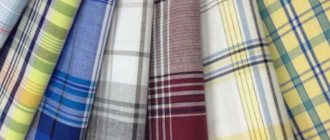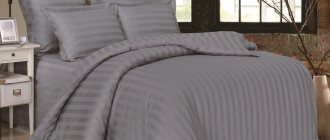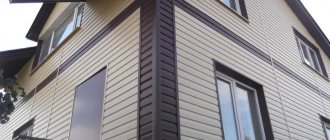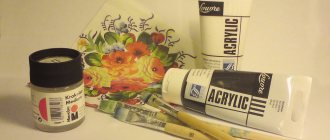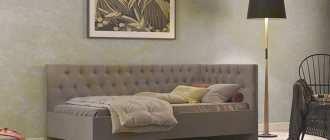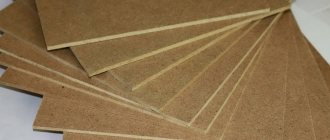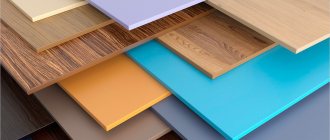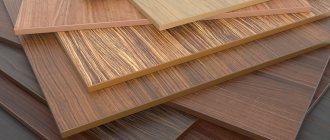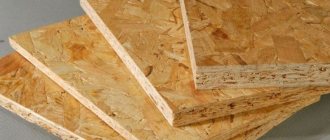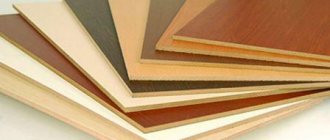Home / Question - answer
Back
Published: 12/08/2020
Reading time: 3 min
1
249
Some buyers, when choosing bed linen, trust only their own tactile sensations. By running their hand over the surface of the duvet cover, they can easily determine whether or not the material is suitable for their full night's rest. The priority is poplin or satin ─ smooth soft fabrics, ideal for bedding sets. It’s better, of course, to buy both options, but if you only have enough money for one, then which one should you choose? Let's figure it out.
- 1 Appearance and texture of fabrics
- 2 Tactile sensations
- 3 Method of weaving threads and dyeing
- 4 Physical properties
- 5 Density and strength
- 6 Cost
- 7 Difficulty of care
- 8 Conclusion
Appearance and texture of fabrics
Both fabrics are of natural origin. They are made from 100% cotton. This means there can be no doubt about their environmental friendliness.
Both materials:
- durable, do not creep, do not shrink, do not tear;
- breathable, that is, they allow the skin to “breathe”;
- hygroscopic, easily absorb moisture.
Poplin is characterized by a soft, dense, pleasant to the touch texture. Satin is the leader of the textile market, which is more suitable for bed linen than others in terms of density, strength, flowing structure, and unobtrusive noble shine. The material can withstand up to 300 washes and guarantees 6 years of service, while maintaining quality, properties, and colors.
Characteristics of poplin
Poplin is a high-quality and practical material with an attractive appearance. Made from cotton using a plain weaving method. There are also mixed fabrics with synthetic additives, wool and silk fibers. For warp and weft, they differ in thickness and composition. The use of threads of different thicknesses gives the fabric a characteristic ribbed structure. The warp is made thin and dense, and the weft is made of rare, coarse threads. Thanks to this technique, poplin is durable, soft and textured. It has a matte, double-sided surface with a slight, noble shine on the face. In appearance, poplin is similar to satin, and in terms of quality and wear resistance, it is similar to calico.
The material is divided according to the method of fiber processing into bleached and dyed. After applying the dye, a plain-dyed, multi-colored, printed and printed material is obtained. Poplin fabric density is 115 g/m2.
The fabric is practical, durable and wear-resistant. Despite the softness, it holds its shape well. It does not shrink when washed and does not fade.
Poplin also has good performance qualities for a comfortable rest. It is pleasant to the body, absorbs moisture and allows air to pass through, and maintains temperature balance.
Tactile sensations
Compared to poplin, satin is more pleasant to the touch. Poplin is also soft. They even sew bed linen from it for the little ones, but when you touch the fabric, you can feel a pronounced “rip”. The texture of the canvas also leads to problems during cutting.
The material is not suitable for those with sensitive skin who are irritated by even the slightest roughness. Those who roll around or sweat a lot in their sleep will also not be happy with a poplin bed, because it gathers in folds, which creates discomfort during sleep.
Satin also forms folds, but they are invisible, almost airy. The fabric is a little “cool”, but quickly heats up, after which it retains heat. Thanks to the sliding texture, the satin bed seems weightless. The smooth silky surface is pleasant to the touch.
Important. When choosing between natural silk and satin, some even prefer the latter as a more comfortable option for sleeping.
Poplin - a modest but magnificent classic
First appearing in French Avignon, where the residence of the Pope was then located, the canvas immediately received the name “fabric for the pope.” Despite the fact that the production uses a typical plain weave of thick cotton fibers, poplin has a texture that is significantly different from coarse calico and chintz. Thinner and lighter than satin, the fabric has a characteristic rib on the matte front surface, suitable for making children's bedding. Like satin, this material is extremely susceptible to staining with permanent dyes. The kits can be viewed on the catalog page.
Method of weaving threads and dyeing
Poplin is characterized by a plain weave of threads of different thicknesses: thin at the warp and almost 2 times thicker at the weft. As a result, a small scar is formed on the surface of the durable fabric.
Satin has a double weaving technique that allows for a density of up to 130 threads/cm2. The material owes its smoothness to one finely twisted thread. The strength of the shine depends on the degree of torsion. The inside is slightly rough so that the linen does not slip off the bed.
Satin and poplin differ in dyeing technology. Satin is made from already dyed fibers, although there are also printed types. The drawing turns out clear and bright with precise details of outlandish flowers, stars, shells, animals, birds. In poplin, the print is applied to the finished canvas. The color is more modest, slightly matte, and may fade over time.
Important. The textile market offers bed linen in 3D design with patterns that create the illusion of volume. Those who love original approaches and new experiences in the interior can try this coloring option; the material can be poplin or satin.
Calico
Made from thick threads of cotton using an extremely tight cross weave. Such thickenings can be seen even with the naked eye.
Today it can rightfully be called an extremely popular and sought-after material. This was facilitated by environmental friendliness, good density, decent performance characteristics, abrasion resistance, breathability, as well as affordable cost.
The density of the material ranges from 50 to 140 threads per square centimeter. The best materials are those with high density (more than 120 g/sq.m), but made from thin fibers. Otherwise, it will be wrong to talk about good practicality and wear resistance.
Currently, there are many types of this fabric in abundance on the market: gray, bleached, printed and plain-dyed. But not every one is used in the production of bedding sets.
In particular, harsh calico is unbleached and has a yellow tint. It is extremely durable and dense, making it ideal for sewing workwear. It is often used to upholster the lower part of upholstered furniture.
Bleached is much more delicate than harsh, it is softer and more pleasant to the touch. The weaving density is in the range of 125 - 146 g/sq.m. This variety can be used for the production of kits, as well as products for medical purposes (gowns, shoe covers, etc.).
Plain-dyed is similar in texture to bleached, but initially it is painted in one shade. It is used to make tablecloths, napkins and budget bed linen, make decorations, and use it as a lining for outerwear.
Printed calico is used to produce bright and colorful sheets, pillowcases and duvet covers for adults and children. Summer clothes, nightgowns and pajamas, dresses, etc. are also made from it.
This is an option for those whose primary requirements are environmental friendliness and comfort. The advantages include:
- the ability to withstand numerous washes while maintaining its original appearance, does not fade;
- no shrinkage;
- resistance to the appearance and proliferation of bacteria and pathogenic microorganisms;
- providing comfort in both cold and hot weather.
Please note: the presence of synthetic fibers in the composition will lead to the appearance of pilling, which will significantly spoil not only the attractiveness of the fabric, but will also negatively affect the comfort of relaxation.
Physical properties
Among the main physical characteristics of poplin and satin it is worth highlighting:
Author:
Anastasia Kukushkina
I hope you enjoy the article I have prepared for you! If you find errors in it, write to me about it! I will answer any questions you have, ask them!
